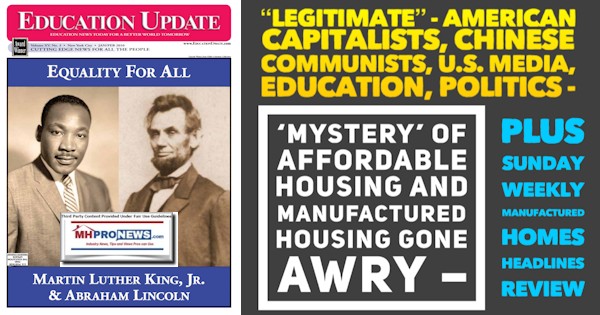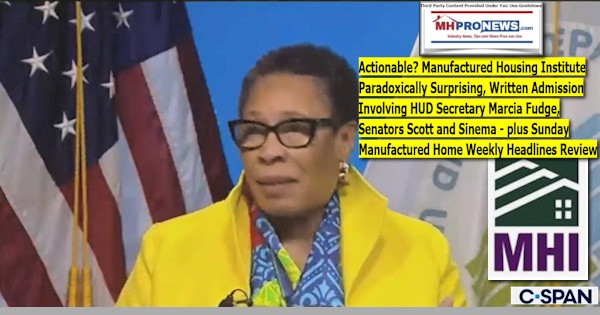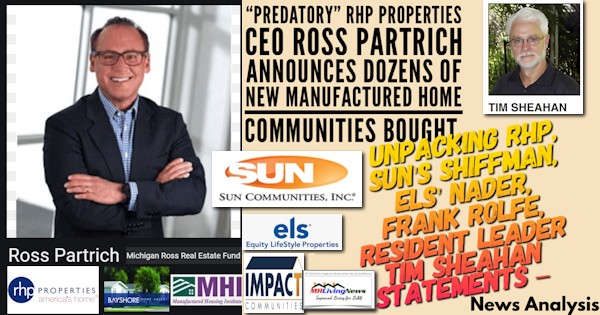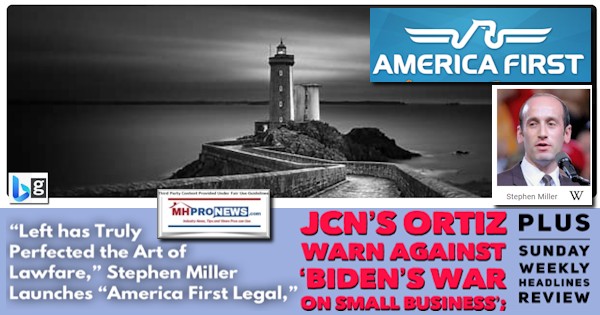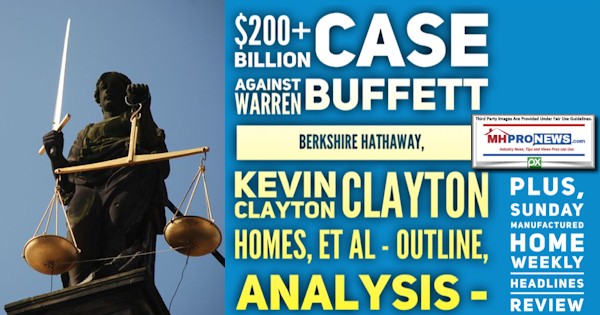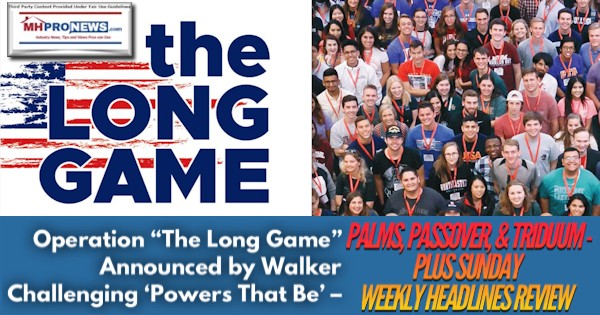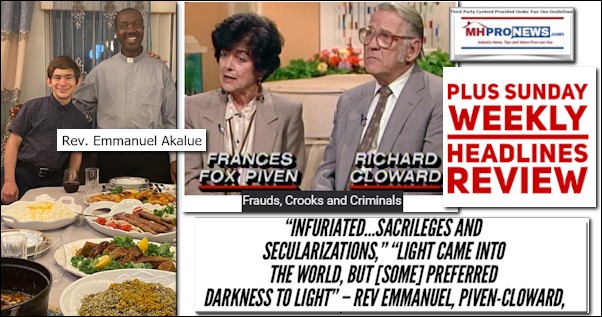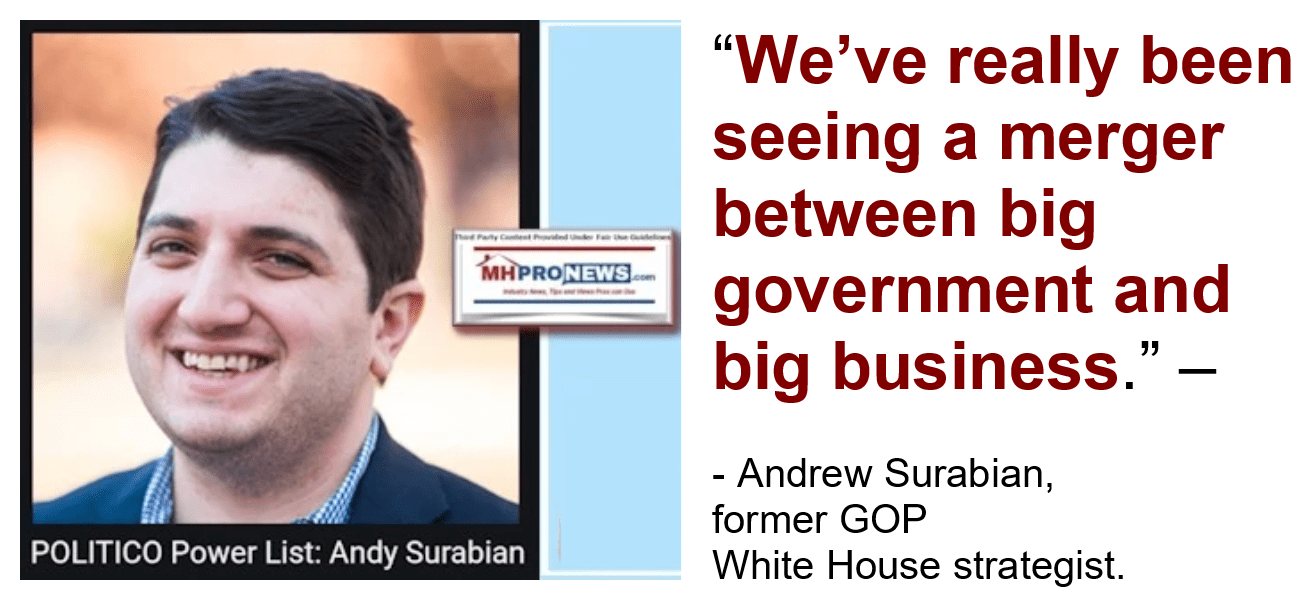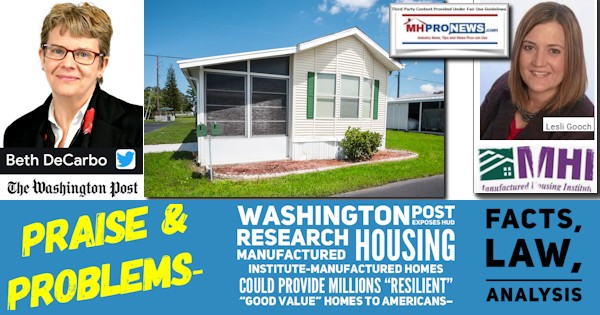
“Resilient” and “value” are two of the phrases from a report by the U.S. Department of Housing and Urban Development (HUD) Office of Policy Development and Research (PD&R) report linked by a fresh news item in a leading newspaper. But the first of those two terms – “resilient” – did not make the cut. What did see print in the Washington Post was a mix of good, problematic, and meh. “Overall, a U.S. Department of Housing and Urban Development report found manufactured housing to be a good value for low-income households,” wrote Beth DeCarbo for the Washington Post (WaPo) on 9.9.2021 in an article entitled “A factory-built home as a means to affordable housing.” Her report had insights like the following. “Low inventory of single-family homes is driving more buyers to look at manufactured housing, said Nicole Bachaud, an economic analyst with Zillow.” “Manufactured homes account for only 6 percent of the country’s housing stock, and the number of new manufactured homes shipped each year is down significantly from the late 1990s.” Lesli Gooch, CEO of the Manufactured Housing Institute (MHI) was cited along HUD and other sources too.
“While localities may not admit they’re keeping us out, they have rules that affect manufactured homes,” said Gooch. While that may be true, it also fails to mention the existing law that could be a swift remedy, if only it was routinely enforced.
More on what was missed later, but first these pull quotes also were included in DeCarbo’s interesting read. Some pull quotes:
- “A study from the Urban Institute found that manufactured housing is 35 to 47 percent less expensive per square foot than new or existing site-built homes.”
- “structural engineer David Roueche found that 19 of the 23 people killed when a tornado that struck Lee County, Ala., lived in a manufactured home.
- “all of the fatalities [from the tornado studied] were primarily the result of anchorage systems that did not meet federal standards. The homes either lacked ground anchors entirely, had degraded anchors, or had anchorage systems that did not appear to meet state code.”
A questionable reference from Clayton Homes supported Next Step about what seemed like an extremely high cost of installation was among the included content.
But in fairness, the article opened with a positive take from a couple of your professionals – Eryn Street and Jonathan Fuss – who last year decided to move from Long Beach, Calif., to Sacramento. The couple admitted they had little knowledge of manufactured housing before buying one this year. They liked the floorplan and community they live in, per WaPo.
Numerous pages could be written about not only what DeCarbo put into her report, but also what was left out. But only a few items will be reviewed to illustrate a point that Martin “Marty” Lavin, J.D., recently made anew. Positive reports about manufactured housing have been around since the 1970s. Largely positive newspaper, magazine, and research reports have been published in the 21st century too. Oftentimes, these are hyped by some as if the latest ‘new report’ may be the one that causes manufactured homes to magically reach its potential. But as DeCarbo noted, the number of manufactured homes being sold today are a fraction of what sales were in the late 1990s. Yet, as Lavin, MHLivingNews, and MHProNews have noted, there have been several instances when manufactured housing promotion on a national scale was supposed to occur.
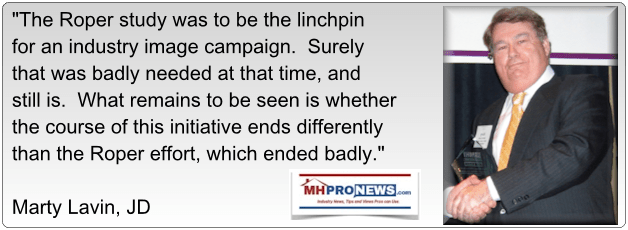


But where is that ‘mythic’ national promotion by MHI that could cause more couples like Street and Fuss, singles, or perhaps millions of families to say something like ‘I’ve heard a lot of good things about modern manufactured homes and when I started home shopping, it became obvious that those claims of style, resilience, and good value where all true.’ But no. Instead, what DeCarbo aptly noted was this.
- “Owners [of mobile and manufactured homes] who lease lots in mobile home communities are vulnerable to rent increases and even evictions when communities are sold to make way for more profitable developments.”
- “And some perceive a stigma in owning a manufactured home and the stereotypical “trailer trash” label.”
While the de rigueur mention of Clayton Homes backed and MHI branded CrossMods made the Washington Post article linked here as a download, her light reference to the fact that few of those Fannie Mae, Freddie Mac and MHI backed units have been sold was also included.
What was not mentioned more specifically is that the evidence from the Government Sponsored Enterprises (GSEs) of Fannie, Freddie and their regulator, the FHFA, all indicate that only a few dozen CrossMods were sold nationally over the course of the last few years. Additionally, some of those CrossMods did not qualify for DTS credit. But even in toto, a few dozens units is only a tiny sliver of a single percent of the hundreds of thousands of ‘mainstream’ HUD Code homes produced during that period was hardly worth mentioning. So why did CrossMods make the WaPo report, unless MHI and their corporate masters keep pushing that apparently failed narrative? Rephrased, it is a tactical and strategic error for MHI to do anything other than bury that apparently failed project. But instead, it still sits on their homepage as if it were something to brag about. Remarkable, but not in a good way.
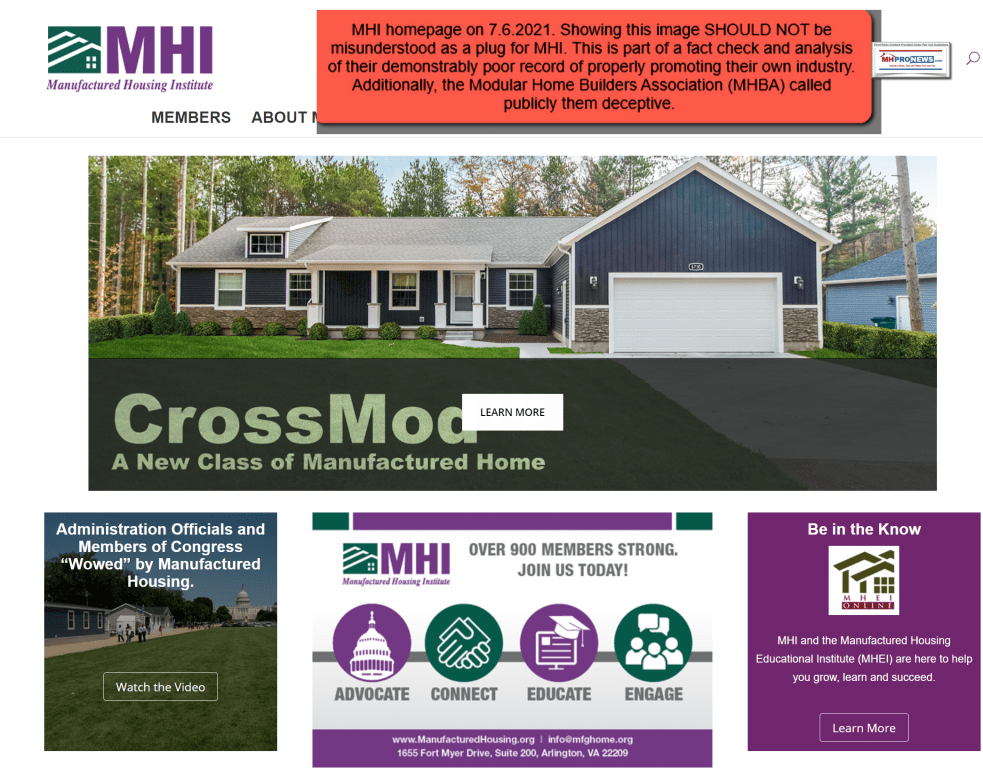
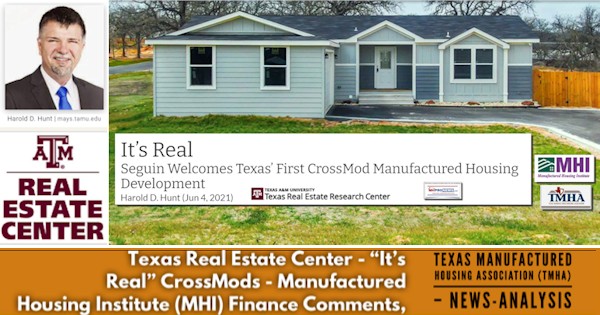
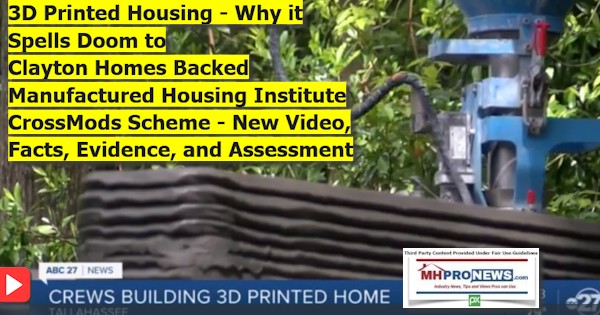
The Good, the Bad, and the Meh
DeCarbo linked up information that for those who might follow the thread might learn several positive things about manufactured homes. But some of those same sources routinely do so in a manner that obscures the good, or misses key facts that could cause manufactured housing to actually break out of its artificially induced national 21st century malaise.
Despite the fact that the Washington Post’s Juliet Eilperin referenced the Manufactured Housing Association for Regulatory Reform (MHARR) and Mark Weiss, J.D., the producer’s trade groups president and CEO in a significant and insightful fashion, there was no such mention by DeCarbo.
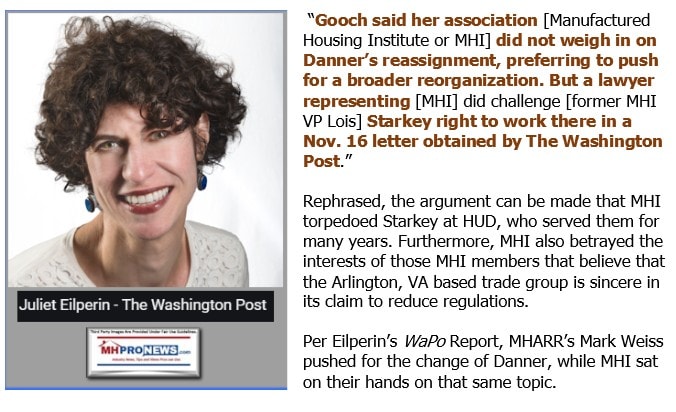
MHARR and sources that were not cited by DeCarbo in her 9.9.2021 “A factory-built home as a means to affordable housing” might have caused her story to be framed differently had they been included.
But what ‘made the cut’ in her article proves much. In no specific order of importance.
- MHI’s leadership were obliquely revealed once more as failing to promote the entire industry in favor of supporting the pet project of CrossMods. CrossMods are mainly backed by Clayton Homes (BRK), Skyline Champion (SKY), and Cavco Industries (CVCO) and the GSEs of Fannie and Freddie.
- The reference to “stigma” demonstrated the point that every full time professional in our industry who has been employed for a year knows from first-hand experience. Why that “stigma” still exists only serves to prove that MHI has failed to remove that stigma, as former MHI and Cavco chairman Joe Stegmayer himself indicated. After all, as the self-proclaimed representatives of “all segments” of the factory built and manufactured housing industries, MHI is responsible for the full scope of issues that falls under that umbrella.
- There is no mention of the phrase “Duty to Serve” manufactured housing, mandated by Congress as part of the Housing and Economic Recovery Act (HERA) of 2008.
- There is no mention of the Manufactured Housing Improvement Act of 2000 (MHIA or 2000 reform law). Where these two key misses not mentioned by Gooch?
- Given the lack of mention of the 2000 reform law, it is no surprise that federal so-called “enhanced preemption” legally enjoyed by HUD Code manufactured homes was not mentioned.
- Given that Gooch knows about these issues, and failed to raise them. Or Gooch did so in such a feckless manner that the irksome CrossMods made the WaPo cut while the far more important DTS and the MHIA did not.
- Each and every significant finding by DeCarbo’s article – direct and oblique – have been previously reported by MHLivingNews and/or MHProNews, often numerous times. So, in a sense, DeCarbo did our publications a favor, though we were not mentioned either.
While DeCarbo’s “A factory-built home as a means to affordable housing” opened with a nice story about a couple named Street and Fuss that discovered manufactured homes, that couple did so because the alternatives were so high, and inventory on conventional housing was so low, that they made the decision to look into manufactured homes. They were pleasantly surprised. Once more, that illustrates the point that the uptick in sales since March 2020 isn’t due to any MHI effort.

But by accident or design, the report raises issues about MHI’s effectiveness at meeting their own stated goals and claims. Some examples illustrate.
- The lack of consumer protections from predatory community operators, who often happen to be MHI members. Indeed, the case could be made that a significant part of the problem that the industry faces in terms of “stigma” is in the last decade often related to behavior by several of MHI’s dominating brands.
- DeCarbo’s report revealed that challenges of getting loans on a manufactured home compared to getting a conventional site-built house. That concern and woe must fall under the MHI umbrella of responsibility, as MHARR is a producers’ group. It is MHI that repeatedly claims to represent producers and post-production interests. MHARR has been going beyond their core mission to raise the issues in the failure of MHI to get Duty to Serve (DTS) manufactured housing from being mere words in a federal statute with regards to more competitive single-family manufactured home lending.
- The failure to mention federal preemption demonstrates once more that MHI seems to pick and choose their topics and words depending on their audience. While mindfulness of an audience is important, the fact that “enhanced preemption” wasn’t part of either the linked HUD report or any of MHI’s references speaks volumes.
- Indeed, the case can be made that MHI is working to undermine preemption while posturing support of it. For more on that see the reports linked below.
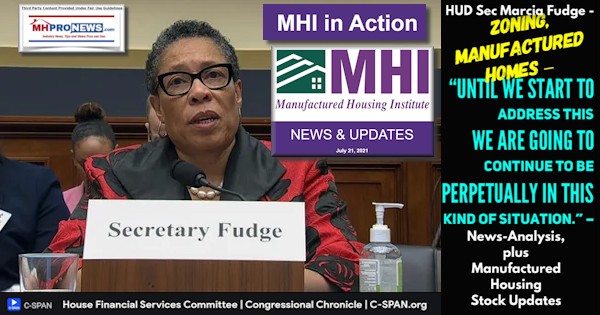
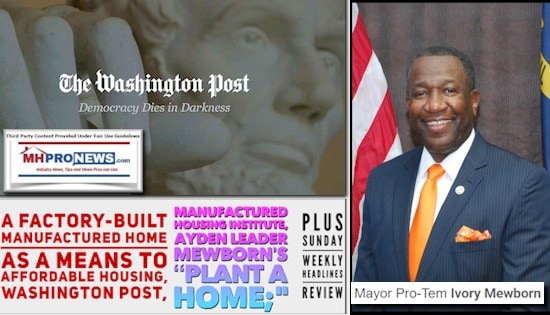
There are three things that an umbrella trade group that is worthy of that name should be doing. It was a manufactured home state association executive, a member of the Manufactured Housing Executives Council (MHEC) that first shared with MHProNews the importance of P.E.P. = Protect Educate Promote.
It was also a MHEC member that said that MHI is guilty of “association malpractice” for failing to earnestly and effectively press the key issues that are holding the industry back.
Gooch admitted what the vast majority of industry professionals already know. Namely, that cities and towns often zone out manufactured housing. What Gooch did obliquely through her admission is reveal that MHI has failed to promote beyond the MHI audience why that practice is arguably illegal. Ironically, Gooch’s admissions below – in a document that mostly industry pros would see, not the general public – only pointed out the failures that are keeping the industry at low ebb. Indeed, three Gooch quotes reflect just how ineffective MHI has been at their own stated – but unfilled – posturing and ‘efforts.’
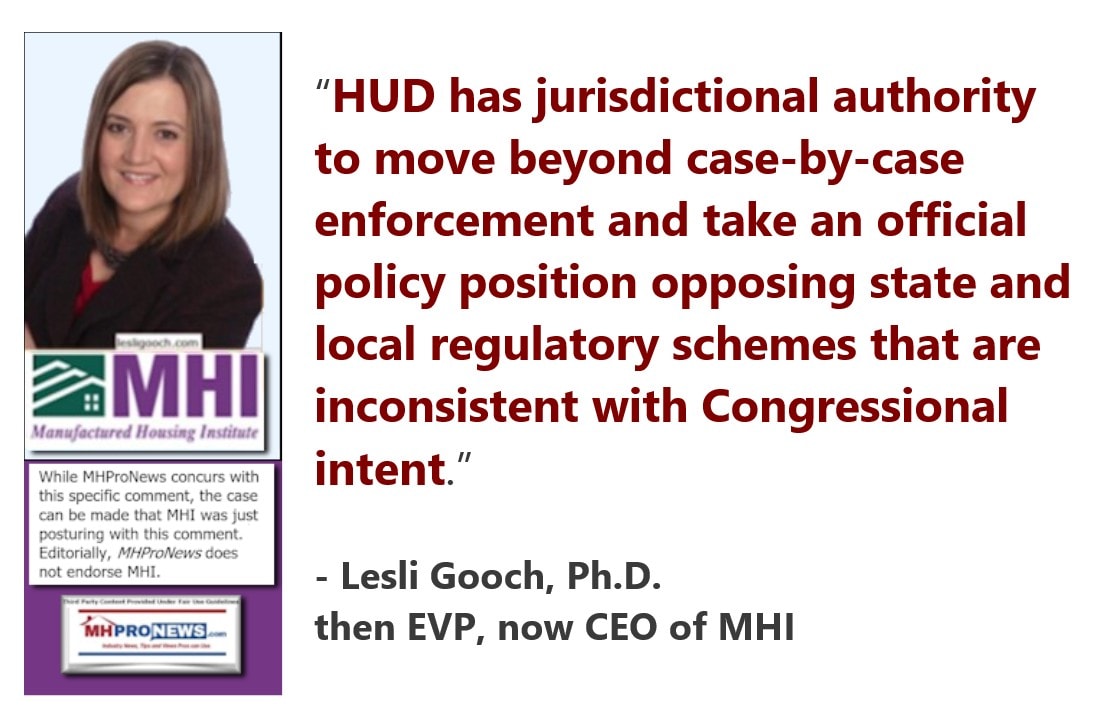
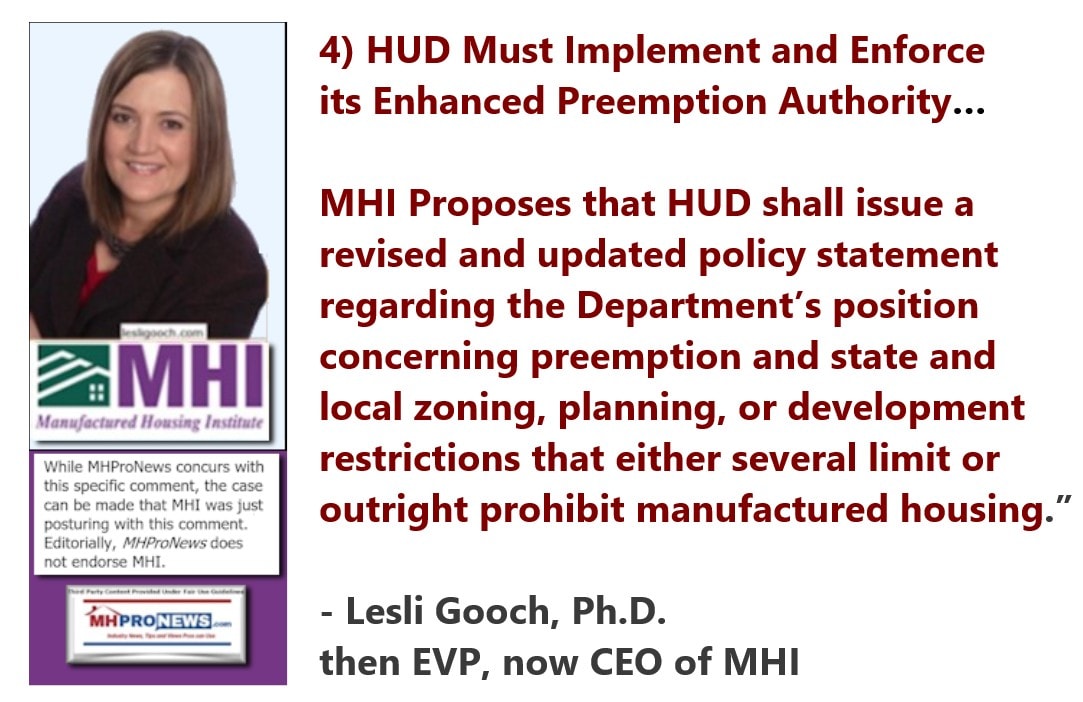
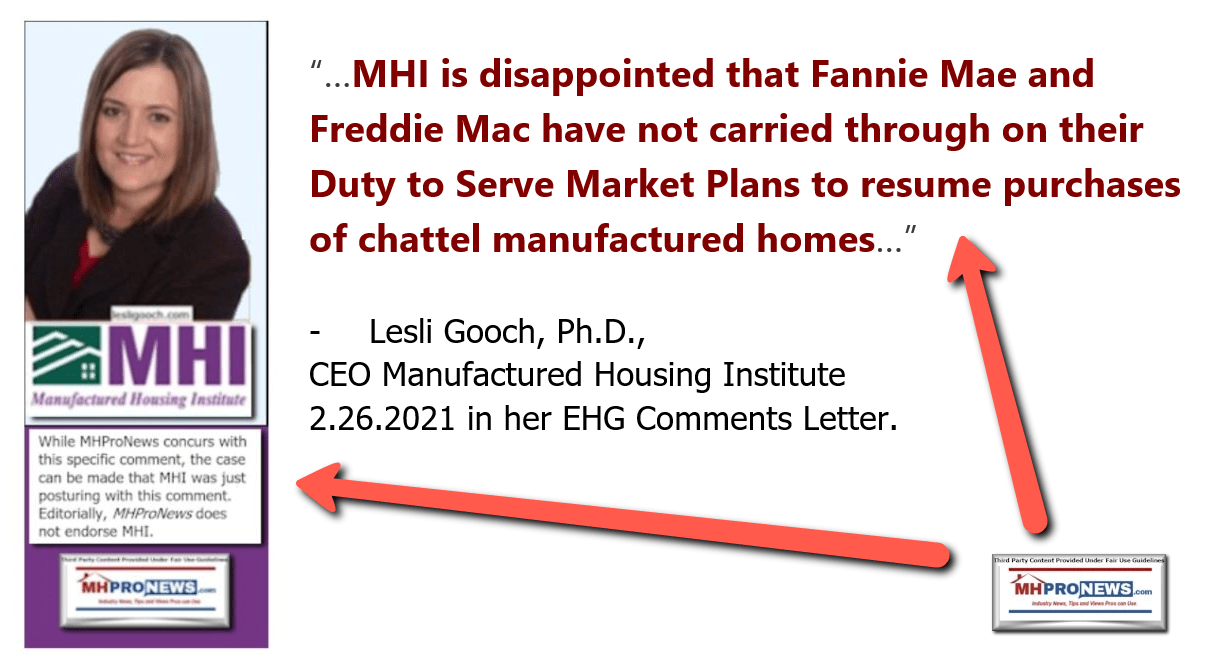
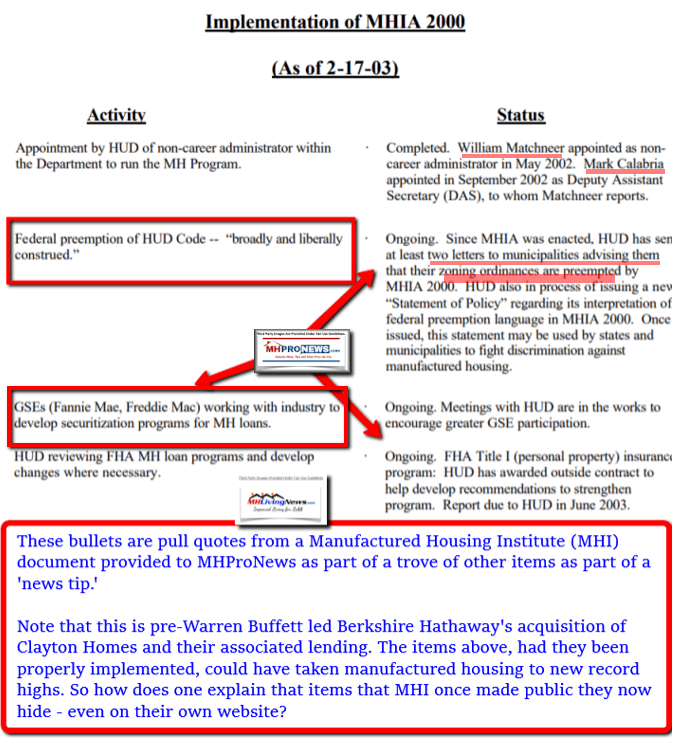
While obviously necessary and significant, it isn’t as if MHARR, MHProNews, and MHLivingNews are the only ones who have from time to time called out MHI or holding them to account. Ironically, one-time MHI leader and still MHI affiliate James “Jim” Ayotte let the proverbial cat out of the bag by saying that what the industry needs isn’t rocket science.
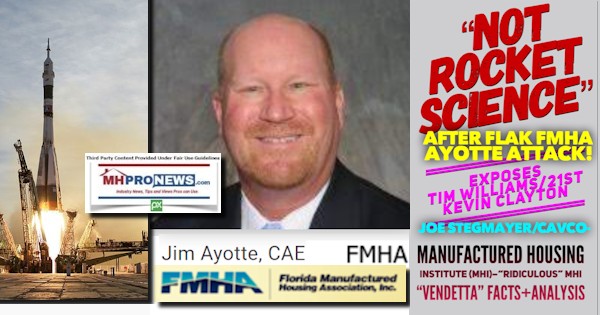
By even posturing an effort through a mere press release, Ayotte upstaged years of MHI photo ops and self-serving videos that have done nothing to advance the industry in a measurable way.
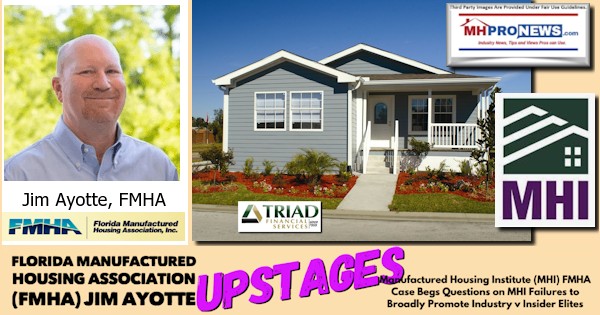
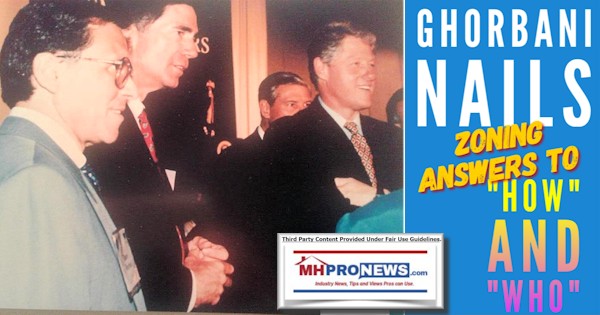
DeCarbo did manufactured housing a favor, but it is a favor that needs to be unpacked by an expert in order to reveal just how treacherous and/or ineffective MHI has been since the dawn of the Berkshire era of manufactured housing.
Key Observations, Summary, Conclusions
The facts are simple. 3 things are necessary for manufactured housing to meet its potential.
- 1) Manufactured housing could overcome zoning and placement issues by simple insisting on enforcing existing federal law. The fact that MHI has not done so is a reflection of either gross incompetence or treachery that just happens to benefit consolidators. Take your pick, but either one is problematic for MHI’s claims, right? Gooch knows the MHIA law and “enhanced preemption,” because she has cited it (albeit only after months of pressure). MHI has for years had an attorney on staff and outside attorneys too. Why haven’t they pressed this matter of enhanced preemption legally? Or why hasn’t MHI mentioned it in a press release or other media commentary? Why haven’t they made the case to the public, and then called on lawmakers to pressure HUD leaders and their Office of General Counsel (OGC) to do their jobs? The failures of MHI’s misses in this regard are lengthy, and this only begins to mention their more obvious failures. Note that MHARR offered to team up with MHI state affiliates to take this on legally, none accepted. The pressure from MHI and their dominating corporate brands merits investigation and prosecution as warranted, because they are arguably defrauding their own members who might happen to believe their apparent acts of deception and misdirection.
- 2) Manufactured housing could overcome the lack of competitive lending options by pointing to the Duty to Serve (DTS) and the proper implementation of other federal laws. In years gone by, FHA Title I previously provided manufactured housing thousands of sales a year. But since the 10/10 rule went into effect, FHA Title I, per CFPB data, has been essentially mothballed. Other federal loan programs, FHA Title II, while still available, could with a modest tweak be effectively used in land-lease communities in a fashion that mirrors its use in conventional housing. Why doesn’t MHI press for the full and proper implementation or reforms of those or other existing programs? Why does MHI talk at all about passing new laws when the existing ones they have failed to get properly implemented?
- The two paragraphs above could be reduced to a single phrase. Enforce existing laws that impact manufactured housing properly. Is that simple enough for MHI cheer leaders to grasp? Enforce existing laws that impact manufactured housing properly.’
- 3). Properly educate and promote the industry. That could be done in a variety of ways. But the fact that WaPo and others still speak of stigma in an era when discrimination and bigotry are largely – at least officially – rebuked only serves to reflect just how poorly MHI has done its own stated job.
P.E.P. Every good ‘umbrella’ trade group should do those three things. That’s as simple as it gets. Protect. Educate. Promote. The fact that MHI’s name and CEO are mentioned by the Washington Post in an article that illustrates their own failures is revealing indeed.
The fact that MHI continues to do anything but their job properly done in a manner that fosters consolidation while ‘white hat’ brands and an estimated 111 million Americans are stuck in rental housing is as red a flag for corrupt corporate and political behavior as one is likely to encounter in or around a national capital that has plenty of corruption in evidence.
In closing, for clarity, there are several factors that have impacted manufactured housing that keeps it from being a housing provider to perhaps a million or more Americans a year. Per third-party Minneapolis Federal Reserve researchers James A. “Jim” Schmitz Jr, David Fettig, and others for one set of causes that are external to the industry. Per those researchers, the ‘sabotaging monopoly’ forces include HUD, ‘builders,’ and trade group influences.
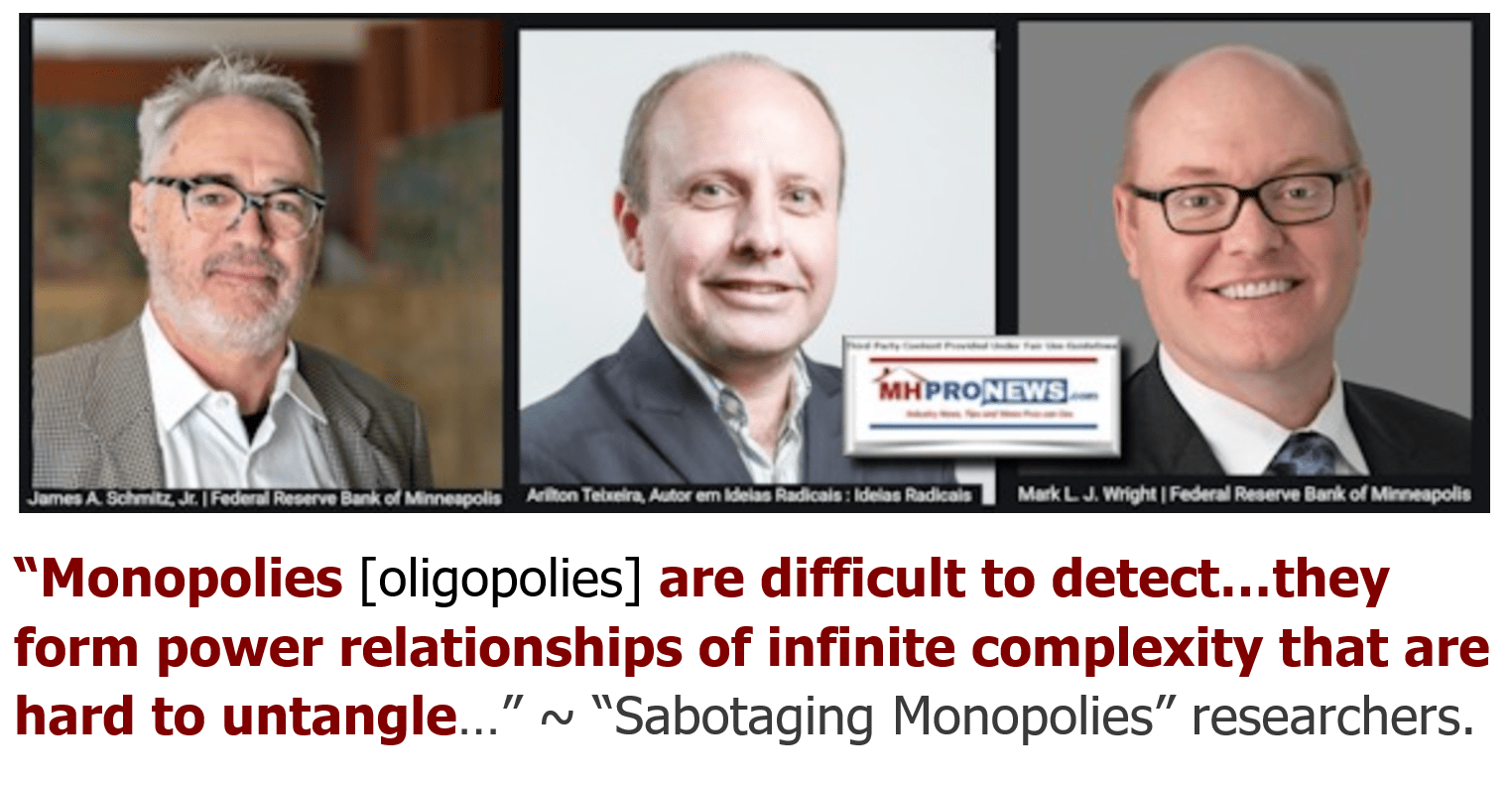
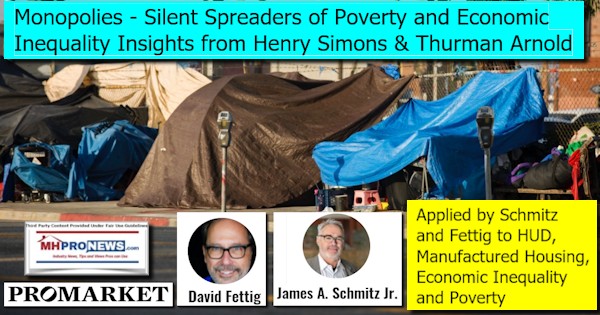
But another set of influences are from within the HUD Code manufactured home industry.
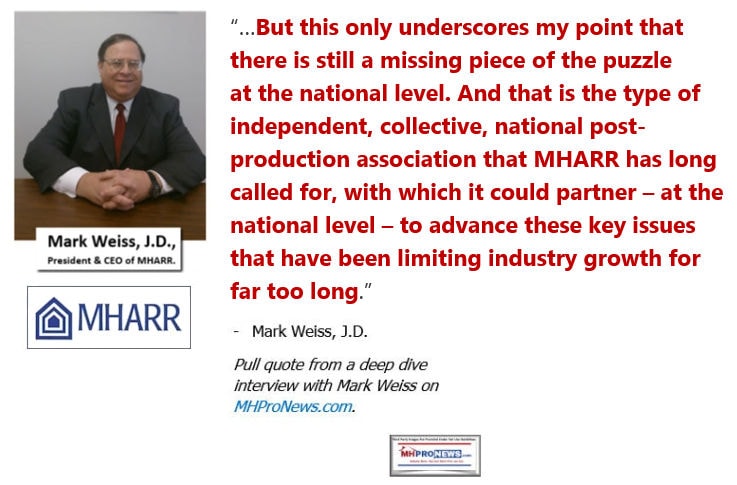
They include the forces behind MHI, which obviously include MHI leaders, staff and ‘elected.’ The validity of those ‘elections’ are themselves questionable. But beyond that point, per third party researcher Samuel “Sam” Strommen for Knudson Law, and voices inside and outside of MHI, there is subversion of the industry from within.
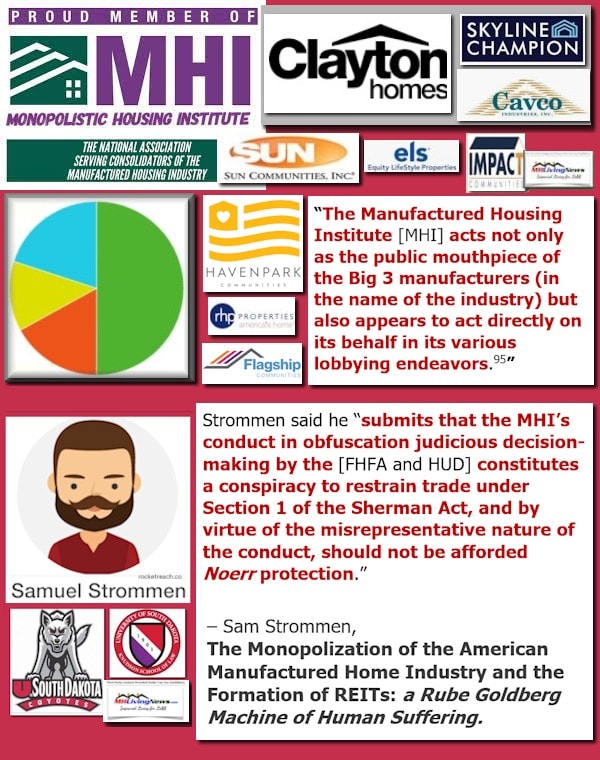
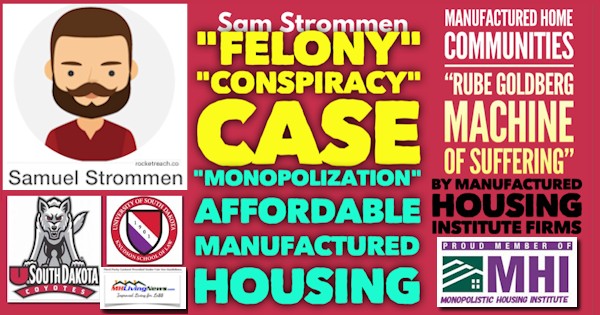
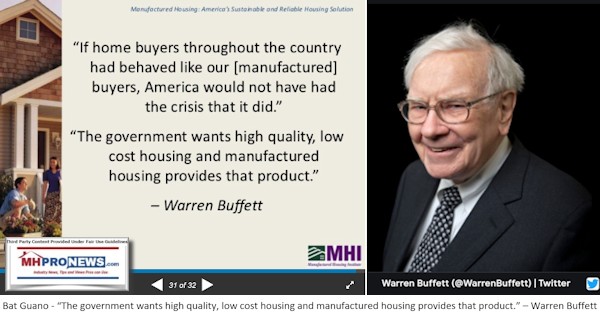
Both external and internal issues need to be dealt with. That noted, at the end of the day, it is MHI’s self-proclaimed role to represent “all segments” of the industry in a manner that will life all boats. That could be done by a proper use of protect, educate, and promote – or P.E.P. That MHI can’t get this right after some 13 years of failure on DTS, and 21 years failure on the MHIA and “enhanced preemption” makes something clear. While more garden variety fumbles or flubs might explain a few years, only systemic collusion involving MHI and their leaders can explain failures for so many years running. The apparent motivation behind it, based on evidence and research, is so that MHI’s dominating brands can consolidate the industry. That consolidation is well documented.
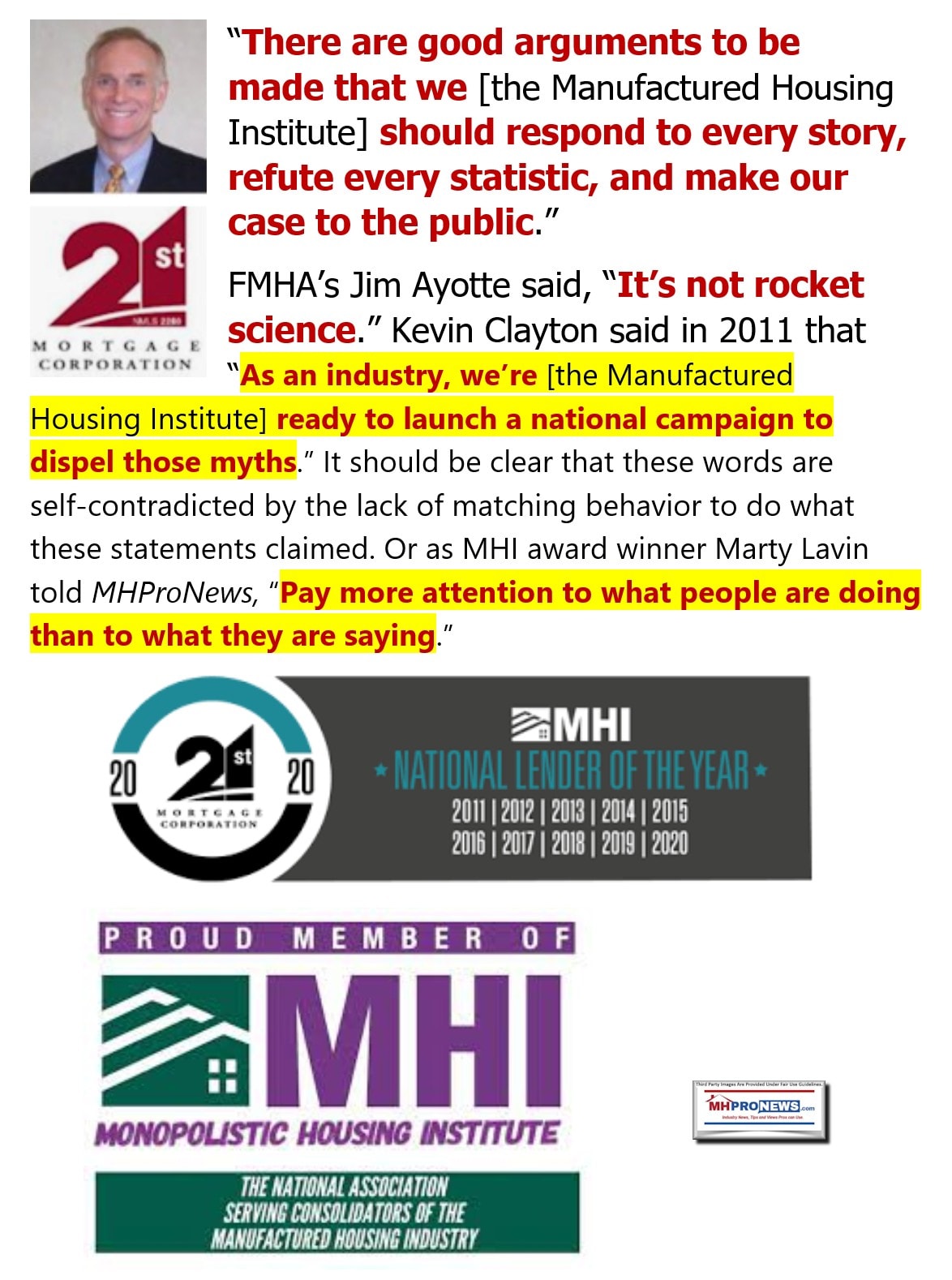
But what MHI leaders and cheer leaders may not fully grasp is that these seemingly subtle efforts to subvert and consolidate the industry can involve various felony violations of the law, as well as other legal violations. That will be more fully explored in a planned special report. But the fact that MHI will not defend against that charge speaks volumes.
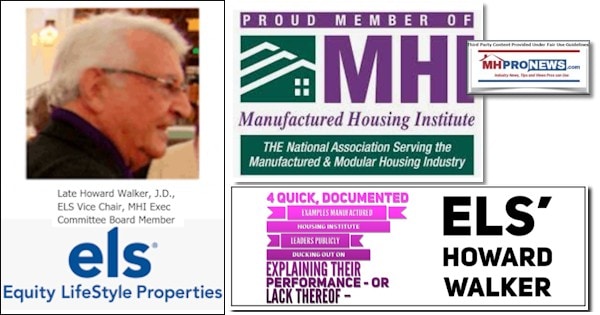
Our industry should be roaring. But it is comparatively snoring. The data from California on Accessory Dwelling Units (ADUs) points to a possible x7 fold increase in manufactured home sales nationally, if only MHI were doing their job properly.
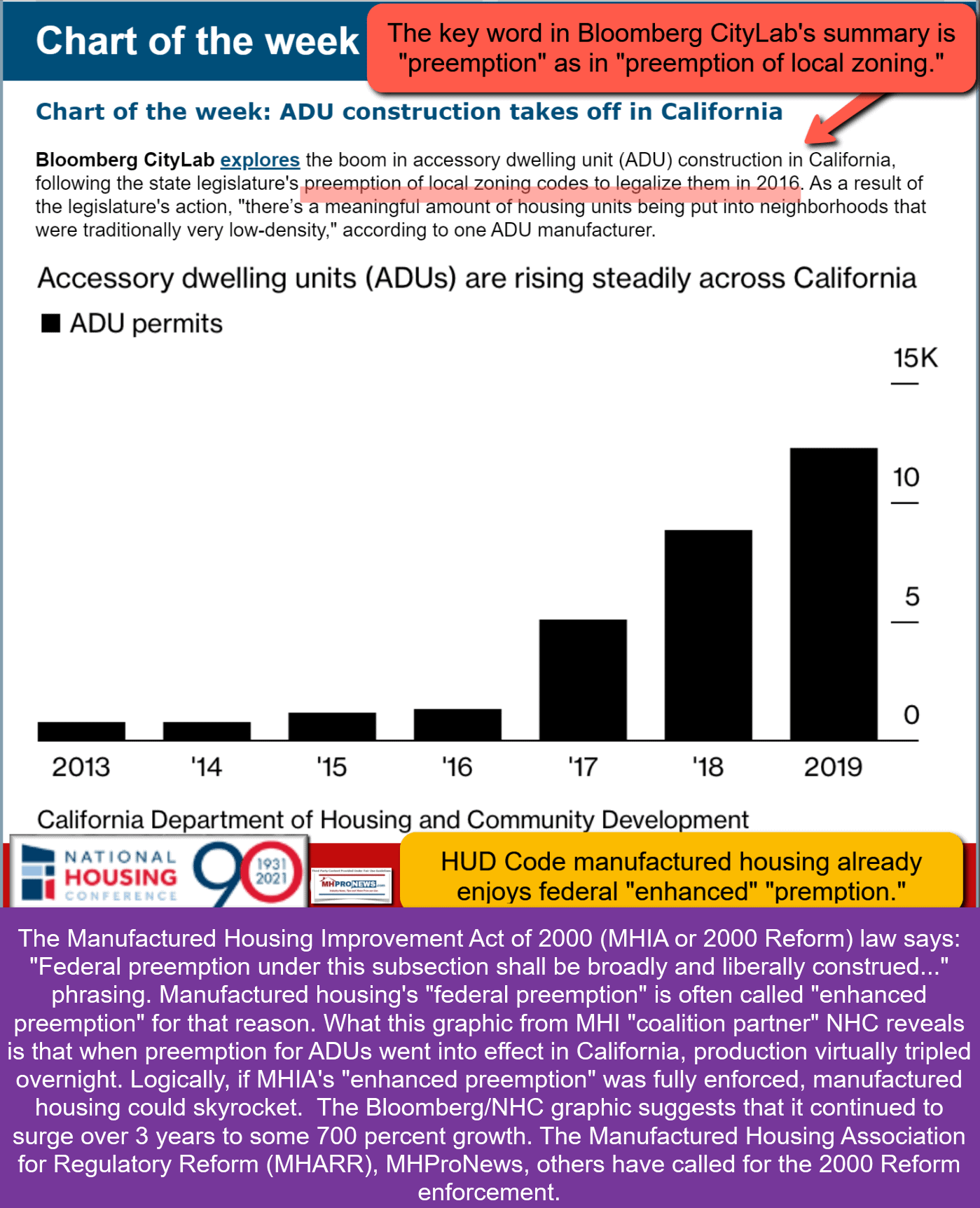
Accountability should begin promptly. It should begin with investigations by federal and/or state officials. It should then be followed up with whatever legal processes the evidence supports to prosecute the wrongdoing as is warranted. Otherwise, as Secretary Fudge soberly said, the cycle that is holding the manufactured housing the industry in low gear that has been experienced for some 20+ years will only continue.###

##


Our thanks to you, our sources, and sponsors for making and keeping us the runaway number one source for authentic “News through the lens of manufactured homes and factory-built housing” © where “We Provide, You Decide.” © ## (Affordable housing, manufactured homes, reports, fact-checks, analysis, and commentary. Third-party images or content are provided under fair use guidelines for media.) (See Related Reports, further below. Text/image boxes often are hot-linked to other reports that can be access by clicking on them.)

By L.A. “Tony” Kovach – for MHProNews.com.
Tony earned a journalism scholarship and earned numerous awards in history and in manufactured housing.
For example, he earned the prestigious Lottinville Award in history from the University of Oklahoma, where he studied history and business management. He’s a managing member and co-founder of LifeStyle Factory Homes, LLC, the parent company to MHProNews, and MHLivingNews.com.
This article reflects the LLC’s and/or the writer’s position, and may or may not reflect the views of sponsors or supporters.
Connect on LinkedIn: http://www.linkedin.com/in/latonykovach
Related References:
The text/image boxes below are linked to other reports, which can be accessed by clicking on them.
